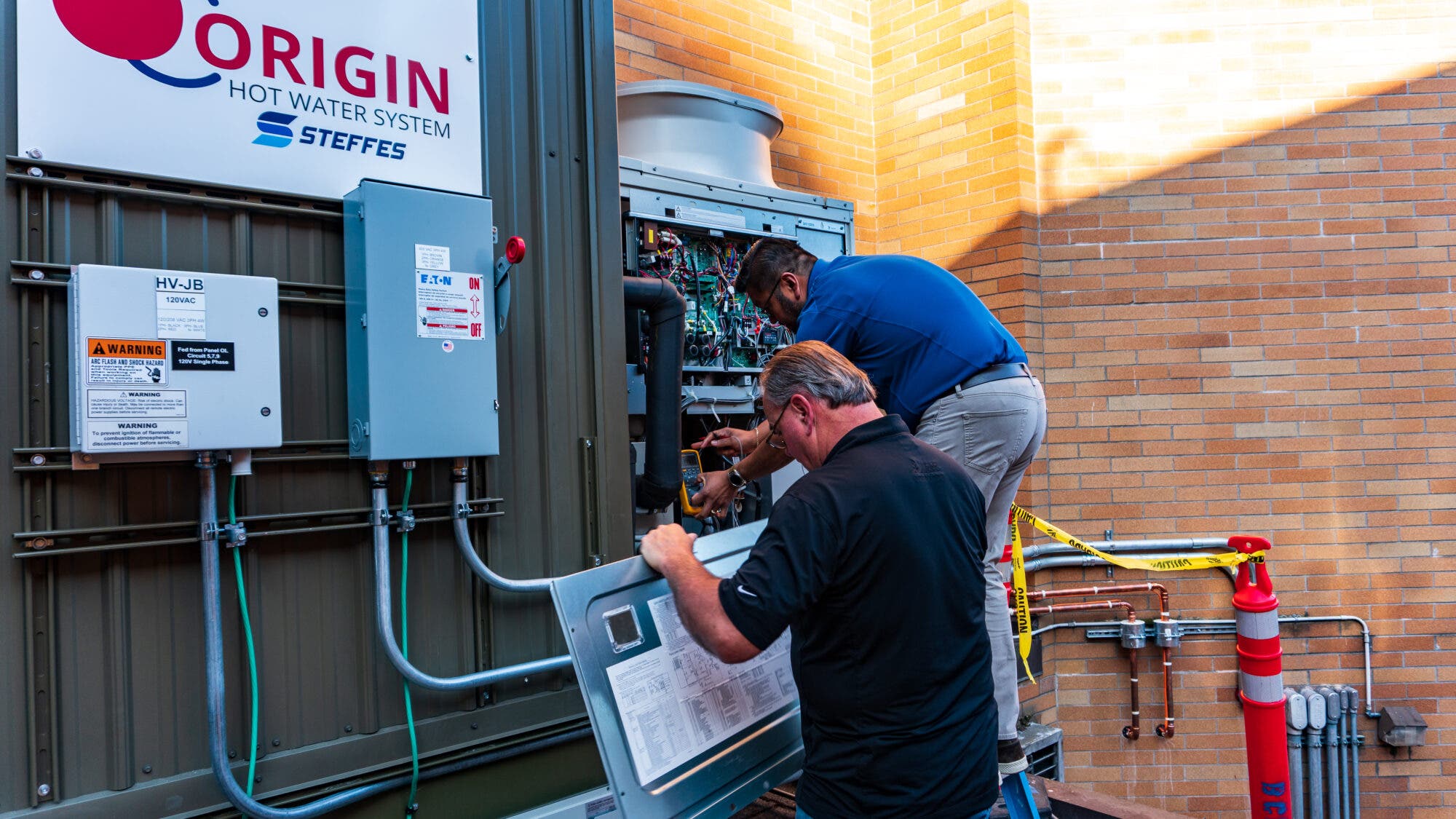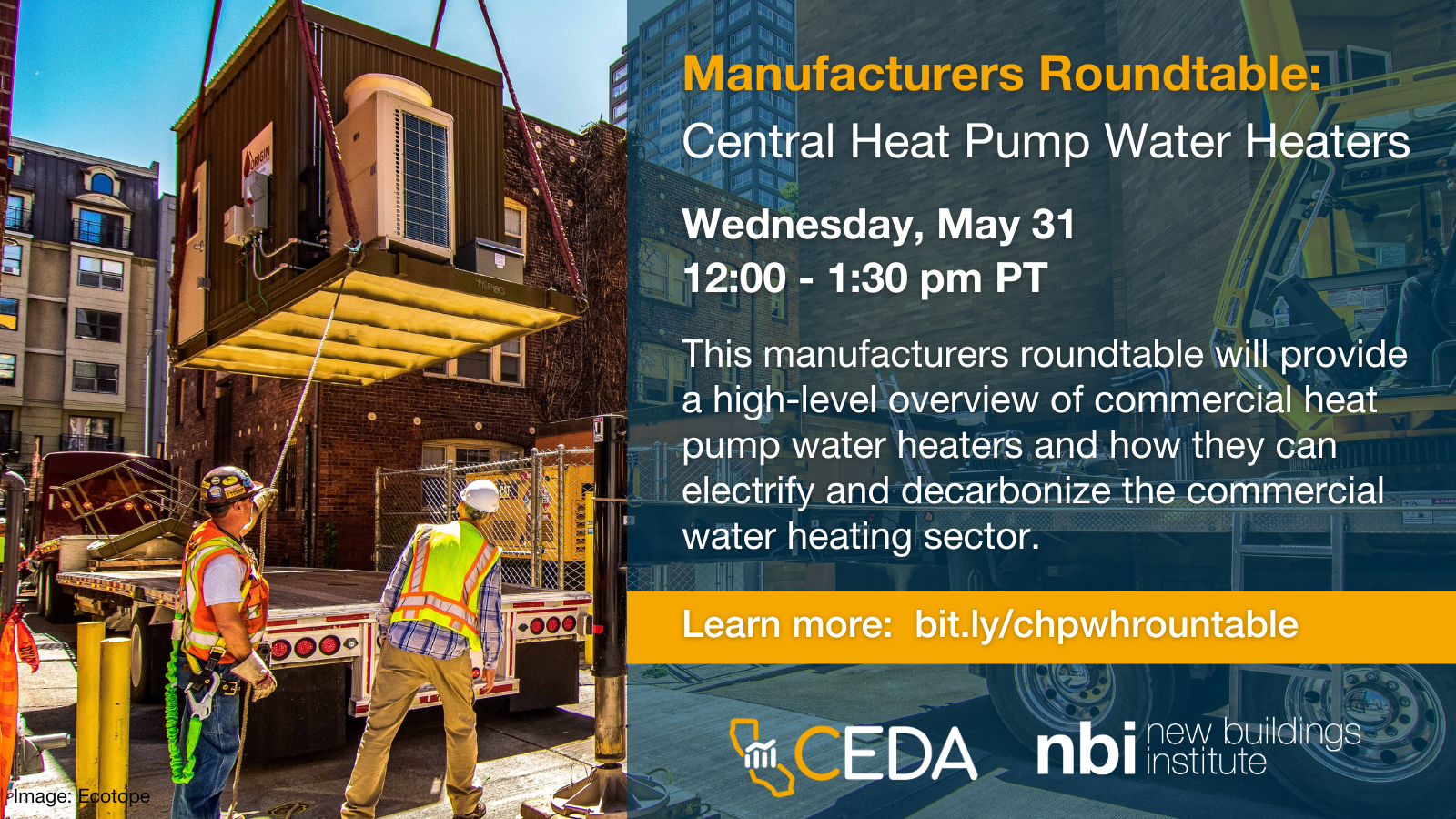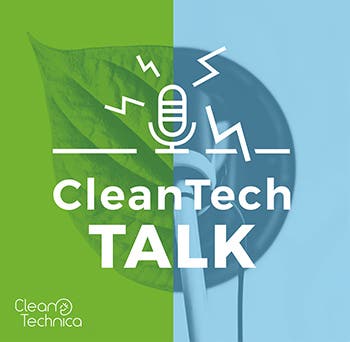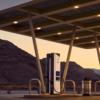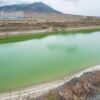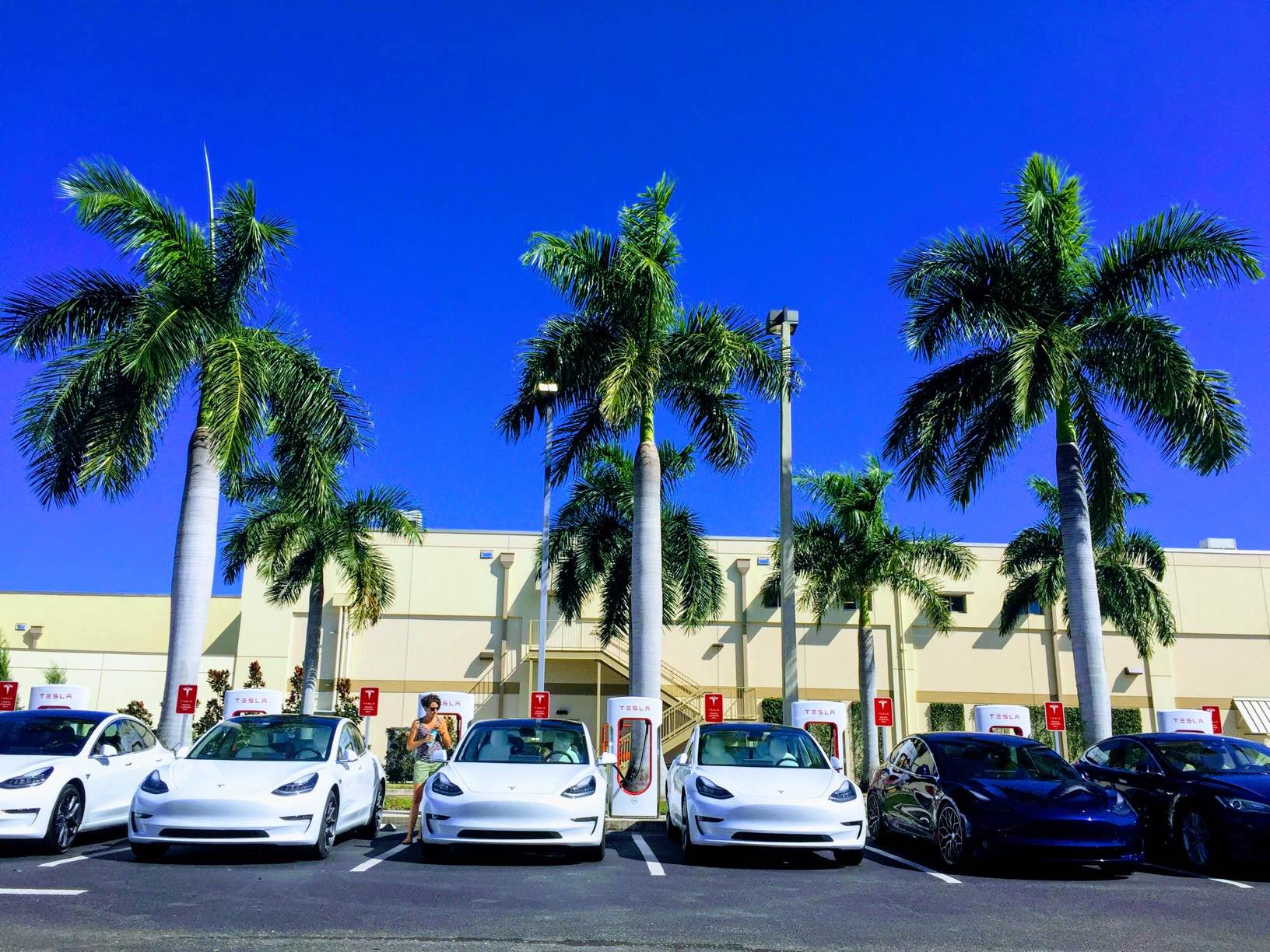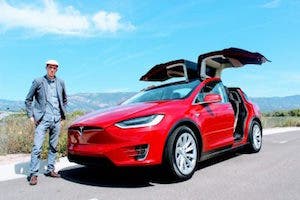
Water heating uses a lot of energy, and consequently costs a lot of money and creates a lot of pollution. The heat pump water heater is the silver bullet to these water heating problems. It’s efficient, saves money, reduces or eliminates air pollution, and it delivers hot water with faster first hour ratings than electric resistance water heaters. I love heat pump water heaters so much I even made a costume of one and danced around for heat pump water heater day last year.
Checking in on #HeatPumpNation: Are you having fun while you (heat) pump up the jam today??
Here's a video from our own Heat Pump Water Heater to get you motivated! We want to see all your fun memes, photos, & videos! #HeatPumpItUp
Music: Pump Up The Jam – Technotronic pic.twitter.com/VVkGeoifQL
— Advanced Water Heating Initiative (AWHI) (@advwaterheating) October 26, 2022
While there are now multiple brands of heat pump water heaters for single family homes (I’ve reviewed Rheem and A. O. Smith), central heat pump water heater systems which heat water for entire buildings (think apartments or hotels) are a relatively new technology, with just a few models available for use.
This matters a lot because in multifamily buildings with five or more units, water heating is the top energy use (32%) and the majority (more than 11 million housing units) of these buildings have a central hot water system. Nationwide, these buildings have a higher percentage of households of color and lower-income households than single-family homes. Thus, deploying central heat pump water heaters to decarbonize water heating in multifamily buildings to extend the benefits of lower cost and lower pollution water heating to lower income communities carries big equity implications.
How Central Heat Pump Water Heaters Work
Central heat pump water heaters use a big outdoor heat pump to heat water, which then is stored in a building’s central storage tanks. A recirculation loop typically distributes the hot water throughout the building.
Systems & Cost
States like Washington and California are now requiring significant portions of new construction to use central heat pump water heaters. However, the technology has not made a big splash in the marketplace yet. This is due to higher first-cost, reliability perceptions, and the need for custom builds. There are probably a couple hundred central heat pump water heaters installed in buildings throughout the US, with most on the West Coast. The Commercial/Central Advanced Water Heating Initiative working group (which I am lucky to work with during my day job) has been leading the way with supporting technology progress by creating crucial tools to get the industry going. But we’re still in the early days of technology adoption.
A big lesson the leaders and pioneers in this technology (like the Northwest Energy Efficiency Alliance, Bonneville Power Administration, Ecotope, and Small Planet Supply) have learned is that successful installations of commercial heat pump water heaters need to happen as a system. This means putting all the parts together off-site and shipping a central heat pump water heater to a building in a fully packaged container rather than having lots of parts show up onsite and having them put together. To see what a central heat pump water heater system looks like, check out a virtual tour of a factory building packaged central heat pump water heaters.
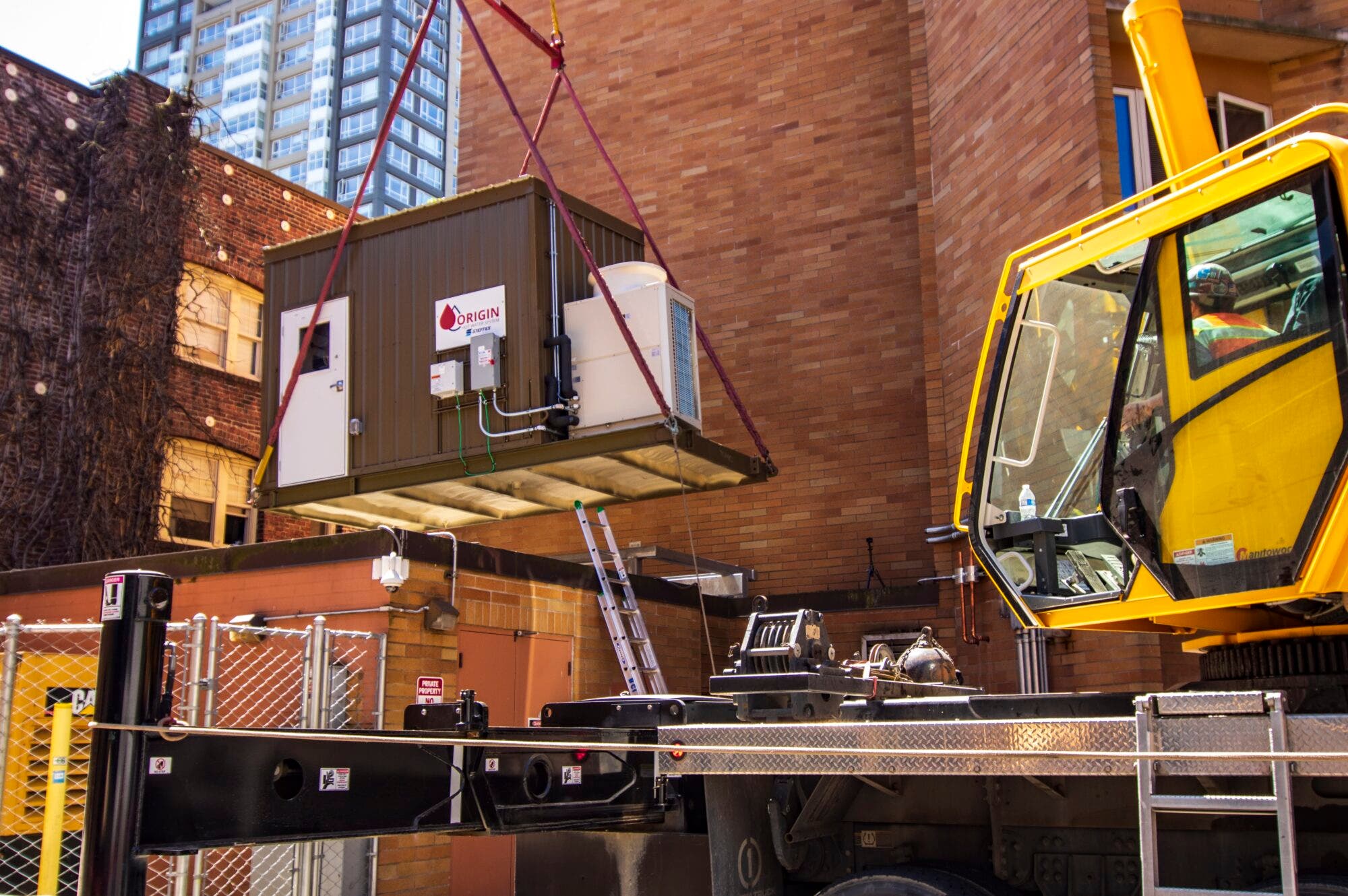
Example of a packaged system or “skid mounted” central heat pump water heater. Image courtesy of Blue Fern Productions and Bonneville Power Administration.
Another big challenge for this industry, like every industry in its early days, is cost. Investment is needed to get the technology to scale (for a really good in-depth look at issues facing this industry, check out an in-depth report on the barriers to Central Heat Pump Water Heaters by my colleagues at NBI for NEEA).
But, there’s a lot of wind at the back of this technology. You have probably heard, we’re in a climate crisis or what the Intergovernmental Panel for Climate Change calls “code red for humanity.” We’ve got to sweep the inefficient and polluting gas and electric resistance water heaters into the dustbin of history. And many manufacturers recognize the challenges and opportunities we’re facing and moving quickly to create central heat pump water heater products.
I’m going to sit down with many of these manufacturers on Wednesday, May 31 for a roundtable on Central Heat Pump water heaters. We’ll explore central heat pump water heaters and what we need to do to launch and scale this technology. Sign up here for this free online event. We will explore how to rapidly decarbonize water heating in commercial and multi-family buildings with the key technology of central heat pump water heaters.
Sign up for daily news updates from CleanTechnica on email. Or follow us on Google News!
Have a tip for CleanTechnica, want to advertise, or want to suggest a guest for our CleanTech Talk podcast? Contact us here.
Former Tesla Battery Expert Leading Lyten Into New Lithium-Sulfur Battery Era — Podcast:
I don't like paywalls. You don't like paywalls. Who likes paywalls? Here at CleanTechnica, we implemented a limited paywall for a while, but it always felt wrong — and it was always tough to decide what we should put behind there. In theory, your most exclusive and best content goes behind a paywall. But then fewer people read it! We just don't like paywalls, and so we've decided to ditch ours. Unfortunately, the media business is still a tough, cut-throat business with tiny margins. It's a never-ending Olympic challenge to stay above water or even perhaps — gasp — grow. So ...

